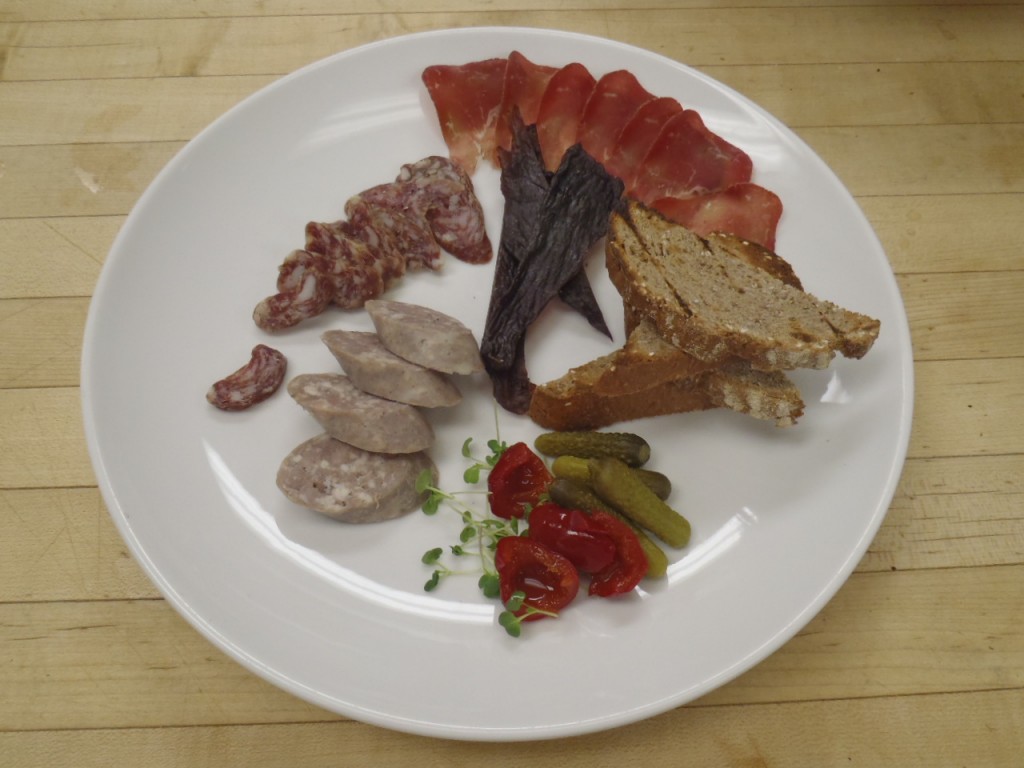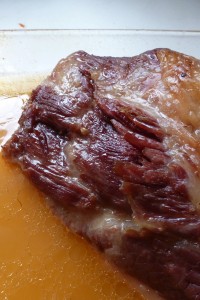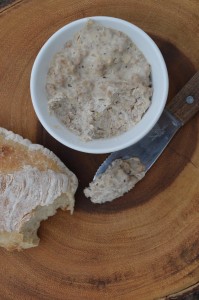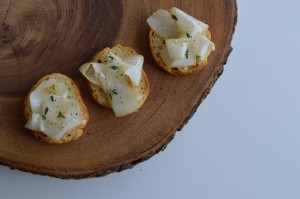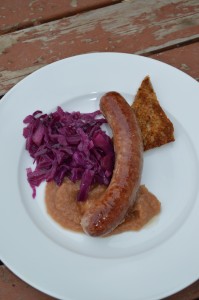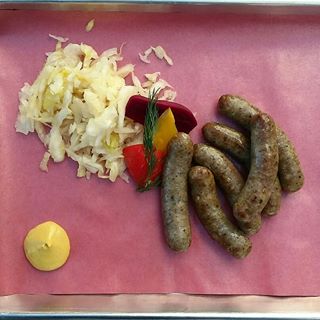
Nürnberger Rost-bratwurst: the little sausages with the big name. “Nürnberger” means from Nuremburg. “Rost” means roasted, as they are usually grilled over an open fire (often charred quite a bit actually). And “Bratwurst” of course is a style of fresh sausage.
Their most obvious trait is their diminutive size: they are usually slender and about three inches long. For this reason one typically consumes many in one sitting. Actually in Nürnberg they are always served in multiples of three, say, three of them on a bun (called Drei im Weggla) or six on a plate, with mustard and sauerkraut.

Exact recipes vary widely, but Nürnberger Rostbratwurst are flavoured with typical Bavarian sausage spices like mace, marjoram, white pepper, and lemon … Continue reading.


